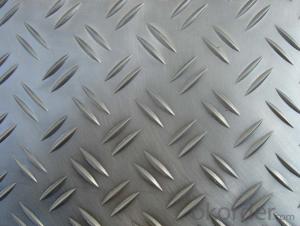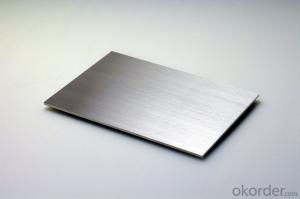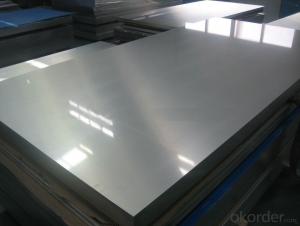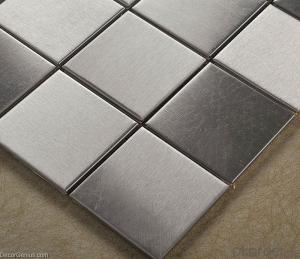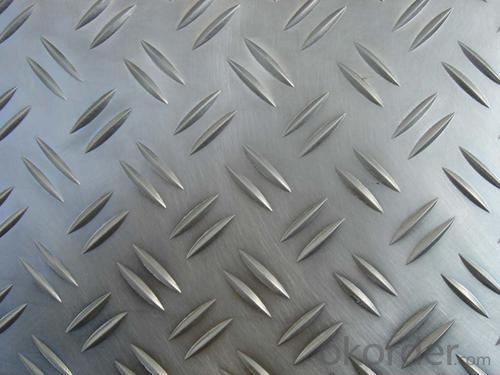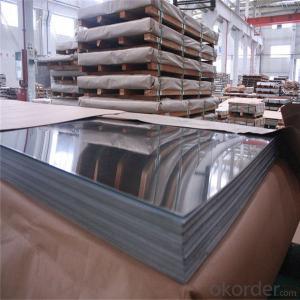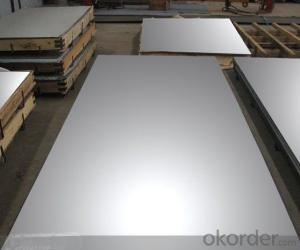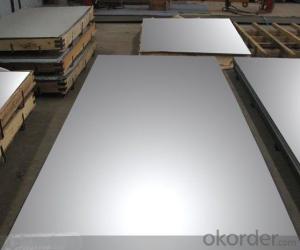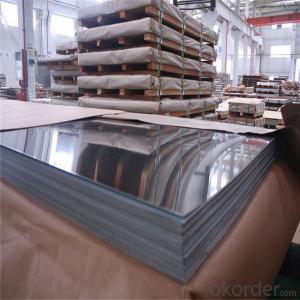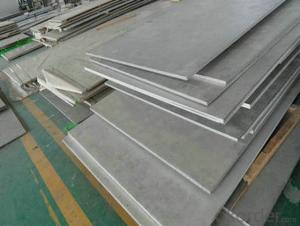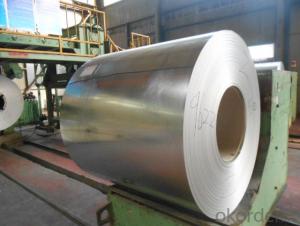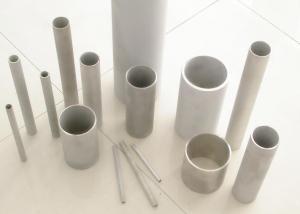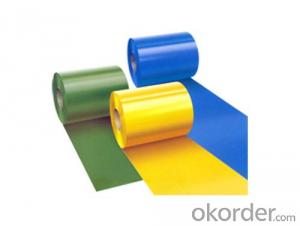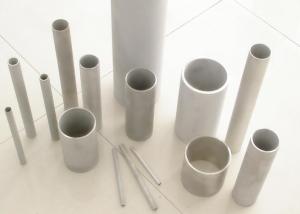ASTM Stainless Steel Sheet (201, 304, 316L, 430)
- Loading Port:
- Shanghai
- Payment Terms:
- TT OR LC
- Min Order Qty:
- 1 m.t.
- Supply Capability:
- 20000 m.t./month
OKorder Service Pledge
OKorder Financial Service
You Might Also Like
Specification
ASTM Stainless Steel Sheet (201, 304, 316L, 430)
Packaging Details:Wooden pallets,water proof paper-20'GP or 40'GP for stainless steel sheet.
Delivery Detail:within 5-7 days after receiving the deposit
1. Specifications about stainless steel sheet
Commodity | Professional 430 201 202 304 304l 316 316l 321 310s 309s 904l stainless steel sheet |
Grade | 201,202,304,304L,316,316L,310S,309S,321,301,310,410,420,430,904L |
Brand | TISCO ,BAOSTEEL,POSCO,JISCO,LISCO |
Certification | SGS,BV,IQI,TUV,ISO,etc |
Thickness | 0.2mm-150mm |
Width | 1000,1219,1250,1500mm, or as your requirements |
Length | 2000,2438,2500,3000,6000mm, or as your requirements |
Surface | No.1, 2B, BA, 8K Mirror, Hairline,satin, Embossed,brush,No.4,HL,matt,pvc film,laser film. |
Standard | ASTM,AISI,SUS,JIS,EN,DIN,GB, ASME,etc |
Delivery time | 5-7 days after confirming the order |
MOQ | 1 Ton |
Advantages | Showing the splendor of your quality, wearresistant as well , strong corrosion resistance and decorative effect, durable and beautiful in good taste. |
2.Production Flow about stainless steel sheet
Raw materials are sending to hot rolling units for rolling into different sizes
Hot rolled material is annealing in cold; rolled annealing furnace and pickling in acid.
All mill rolls are grinded on precision grinding machine with proper chamfering after first shiftoperation.
All sheets are pickled in different tanks and dried on brush roll machine before dispatched.
These sheets are again annealing and are sent to straighten machine for straightening.
Inspections are done at various stages. Keep proper control overall internal process via rolling,annealin and pickling by our experienced staff.
3.Surface--stainless steel sheet
| Surface Finish | Definition | Application |
| 2B | Those finished, after cold rolling, by heat treatment, pickling or other equivalent treatment and lastly by cold rolling to given appropriate luster. | Medical equipment, Food industry, Construction material, Kitchen utensils. |
BA/8K mirror | Those processed with bright heat treatment after cold rolling. | Kitchen utensils, Electric equipment, Building construction. |
| NO.3 | Those finished by polishing with No.100 to No.120 abrasives specified in JIS R6001. | Kitchen utensils, Building construction. |
| NO.4 | Those finished by polishing with No.150 to No.180 abrasives specified in JIS R6001. | Kitchen utensils, Building construction, Medical equipment. |
| Hairline | Those finished polishing so as to give continuous polishing streaks by using abrasive of suitable grain size. | Building Construction. |
| NO.1 | The surface finished by heat treatment and pickling or processes corresponding there to after hot rolling. | Chemical tank, pipe. |
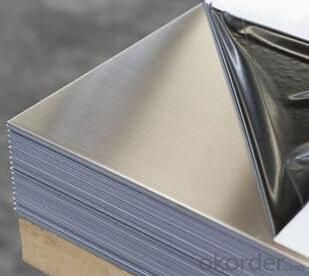
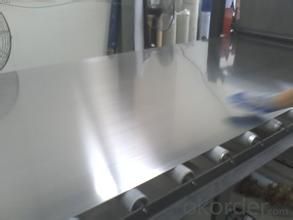

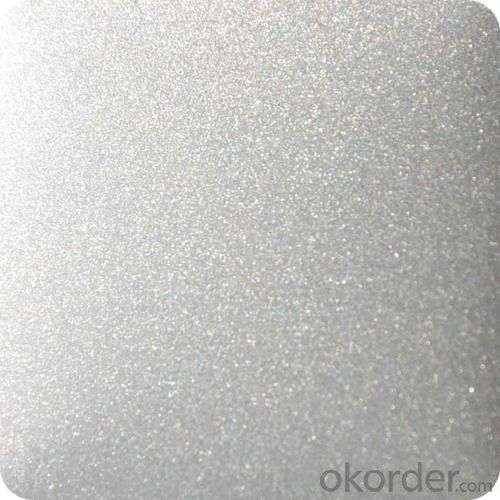

- Q: What is the hardness of stainless steel sheets?
- The hardness of stainless steel sheets can vary based on the specific grade and manufacturing process employed. Typically, stainless steel sheets are renowned for their exceptional hardness and strength. In industrial applications, the most commonly utilized grades, such as 304 and 316, exhibit a hardness range of 70-90 HRB (Rockwell hardness B scale) or 150-200 HV (Vickers hardness). However, there are also specialized stainless steel alloys available that can possess even higher degrees of hardness, such as precipitation-hardened grades like 17-4 PH, which can attain hardness levels of 30-40 HRC (Rockwell hardness C scale). To determine the precise hardness of a particular stainless steel sheet, reference to the manufacturer's specifications or performing hardness testing utilizing appropriate methods and equipment is necessary.
- Q: What are the different types of stainless steel sheet surface coatings available?
- There are several types of stainless steel sheet surface coatings available, including brushed or satin finishes, mirror finishes, bead blasted finishes, and embossed or textured finishes.
- Q: How do you bend stainless steel sheets?
- Bending stainless steel sheets requires a combination of skill, knowledge, and the right tools. Here are the steps to bend stainless steel sheets effectively: 1. Determine the type of stainless steel you are working with: Stainless steel comes in different grades, each with its own unique characteristics. Knowing the specific grade of stainless steel will help you understand its malleability and how it responds to bending. 2. Prepare the stainless steel sheet: Before you begin bending, make sure the stainless steel sheet is clean and free of any dirt or debris. You can use a mild detergent and a soft cloth to clean the surface. 3. Mark the bending line: Measure and mark the exact spot where you want to bend the stainless steel sheet. Use a ruler or a straight edge to ensure a precise and straight line. 4. Use a suitable bending tool: There are various bending tools available for stainless steel sheets, such as a press brake, a rolling machine, or a bending machine. Choose the appropriate tool based on the thickness and size of the stainless steel sheet. 5. Apply pressure gradually: Place the stainless steel sheet into the bending tool, ensuring that it aligns with the marked bending line. Start applying pressure gradually, working your way from one end to the other. Avoid applying excessive force too quickly, as it can cause the sheet to crack or deform. 6. Adjust the bending angle: Depending on the desired angle of the bend, you may need to adjust the position of the stainless steel sheet within the bending tool. Use the tool's adjustments or additional tools like clamps to achieve the desired angle accurately. 7. Check the result: Once you have completed the bending process, carefully remove the stainless steel sheet from the bending tool. Inspect the bend for any defects, cracks, or unevenness. If necessary, you can use a rubber mallet or a hammer with a soft face to make minor adjustments. Remember, bending stainless steel sheets requires practice and precision. It is advisable to start with smaller projects and gradually work your way up to more complex bends. If you are unsure or lack experience, consulting a professional in metal fabrication is always a good idea to ensure the best results.
- Q: Can stainless steel sheets be used for heat transfer applications?
- Yes, stainless steel sheets can be used for heat transfer applications. Stainless steel has excellent thermal conductivity, making it suitable for transferring heat efficiently between two surfaces or mediums. It is commonly used in heat exchangers, cookware, and other applications where heat transfer is essential.
- Q: What is the typical thickness range for stainless steel sheets?
- The typical thickness range for stainless steel sheets is between 0.4mm and 6mm.
- Q: What are the different types of perforated patterns available for stainless steel sheets?
- There are several different types of perforated patterns available for stainless steel sheets, including round, square, slotted, and decorative patterns. Each pattern offers a unique aesthetic appeal and functional characteristics, making it suitable for various applications.
- Q: Are stainless steel sheets suitable for brewing equipment?
- Stainless steel sheets are indeed an excellent choice for brewing equipment. With its outstanding corrosion resistance, durability, and hygienic properties, stainless steel has become a popular material for such equipment. It is highly resistant to rust, stains, and chemical reactions, making it perfect for contact with liquids and food-grade applications. Moreover, stainless steel sheets offer a smooth and non-porous surface, preventing the growth of bacteria and enabling effortless cleaning and sanitation. In addition, stainless steel can withstand the high temperatures involved in brewing processes without warping or deforming, thanks to its remarkable heat resistance. In sum, stainless steel sheets are a dependable and enduring option for brewing equipment.
- Q: Can stainless steel sheets be used for elevator cladding?
- Yes, stainless steel sheets can be used for elevator cladding. Stainless steel is a popular material choice for elevator cladding due to its durability, resistance to corrosion, and aesthetic appeal. It provides a sleek and modern look to elevators, making it a preferred option for many architects and designers. Stainless steel sheets are available in various finishes, such as brushed, mirrored, or patterned, allowing for customization and flexibility in design. Additionally, stainless steel is easy to clean and maintain, making it a practical choice for high-traffic areas like elevators. Overall, stainless steel sheets offer a durable and visually appealing solution for elevator cladding.
- Q: What is the abrasion resistance of stainless steel sheets?
- Stainless steel sheets are widely acknowledged for their high level of abrasion resistance. They possess exceptional durability and hardness, which render them impervious to damage caused by friction or contact with abrasive substances. The extent of this abrasion resistance can differ, depending on factors such as the grade and finish of the stainless steel sheet, as well as the particular purpose it serves. Nonetheless, stainless steel sheets are renowned for their outstanding ability to withstand scratches, scuffs, and other types of abrasion, thereby making them a preferred option across diverse industries that prioritize longevity and durability.
- Q: Are stainless steel sheets resistant to high-pressure environments?
- Yes, stainless steel sheets are highly resistant to high-pressure environments. Stainless steel is a strong and durable material that can withstand the pressure exerted by various industrial processes, such as hydraulic systems, chemical processing plants, and oil and gas pipelines. It is known for its excellent tensile strength and ability to maintain its structural integrity even under extreme pressure conditions. Additionally, stainless steel is also resistant to corrosion, which further enhances its suitability for high-pressure environments where exposure to moisture or chemicals is common. Overall, stainless steel sheets are widely used in industries that require materials capable of withstanding high-pressure conditions due to their exceptional strength and resistance properties.
Send your message to us
ASTM Stainless Steel Sheet (201, 304, 316L, 430)
- Loading Port:
- Shanghai
- Payment Terms:
- TT OR LC
- Min Order Qty:
- 1 m.t.
- Supply Capability:
- 20000 m.t./month
OKorder Service Pledge
OKorder Financial Service
Similar products
Hot products
Hot Searches
Related keywords
